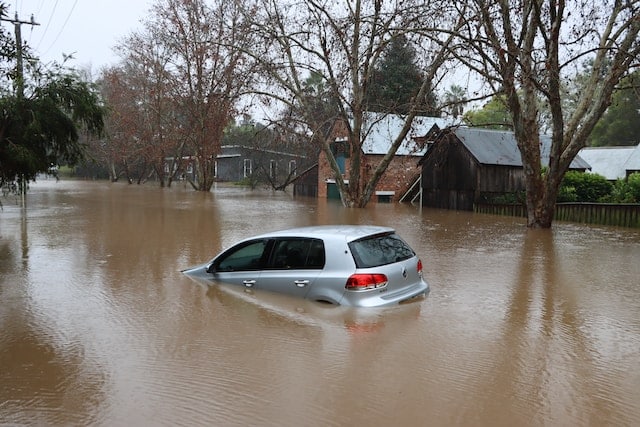Water damage can cause severe problems in residential and commercial establishments, requiring immediate action to reduce the damage. Employing specialized machinery is one of the most effective water extraction methods. A water extraction machine is classified into several varieties, each designed to solve certain conditions and forms of water damage.
In this detailed overview, we will look at the many types of water extraction machines today and their functions and applicability for various applications. Understanding this equipment will assist homeowners, company owners, and repair specialists in making informed decisions in a water-related emergency.
Understanding the different types of water extraction machines is crucial for effectively addressing water damage in various settings. Among the most challenging scenarios is basement flooding, a common issue faced by many homeowners. The complexity of basement water cleanup requires not just the right equipment but also expertise in water removal techniques to ensure a thorough job and prevent long-term damage.
For those facing such difficulties, seeking professional help can make a significant difference. Professionals equipped with the latest extraction machines are best suited for tackling the intricate task of basement water removal, ensuring your home is restored to its pre-damage condition as quickly and efficiently as possible.
Portable Carpet Extractors
Portable carpet extractors are versatile machines often used in homes and small businesses. They are great for extracting water from carpets, upholstery, and tiny places because they are compact, lightweight, and easy to maneuver. These devices inject a cleaning solution into the damaged region and then suck the solution, water, and dirt out with intense suction.
Portable carpet extractors are classified into two types: hot water extraction and cold water extraction. Hot water extraction uses heated water to break down and remove dirt and stains effectively. In contrast, cold water extraction is appropriate for fragile textiles and materials that may be damaged by hot water.
Truck-Mounted Extractors
Truck-mounted extractors are heavy-duty machinery that professional restoration companies frequently utilize for larger-scale water extraction tasks. These truck-mounted extractors have more power and capacity than handheld extractors. They have strong suction and can remove significant water from carpets, floors, and other surfaces.
Truck-mounted extractors are made from a huge tank holding water and waste, a powerful pump, and a long hose leading to the extraction wand. The hose extends the reach and makes it easy to cover vast areas. Truck-mounted extractors frequently use hot water extraction, which improves cleaning efficiency.
Flood Extractors
Flood or water claw extractors are specialist water extraction equipment designed to recover water from the deepest layers of carpeting and padding. They are especially beneficial in cases involving flooding or significant water damage. Flood extractors provide focused extraction, which helps to prevent long-term damage such as mold and mildew growth.

Key Features
Claw-Like Attachment
Flood extractors have a unique claw-like attachment specifically intended to collect water from the carpet fibers and underneath the padding. The claw connection forms a seal around the damaged area, allowing for focused water evacuation deep within the carpet.
Thorough Water Extraction
Flood Extractors excel at removing water that has soaked into the carpet and padding, as opposed to surface-level extraction methods. The claw attachment penetrates the carpet deeply, removing extra moisture and reducing saturation, which can lead to more severe damage.
Portable and Maneuverable
Flood extractors are typically portable, lightweight, and easy to maneuver. This allows repair personnel to traverse through impacted regions and extract water easily. Their small size makes them convenient to transport and use in various settings.
Effective in Preventing Secondary Damage
Flood extractors’ rapid and thorough extraction helps to prevent secondary damage caused by water, such as mold growth and structural deterioration. By eliminating moisture from the carpet and padding, these devices considerably lower the likelihood of long-term difficulties and contribute to a successful restoration procedure.
Benefits of Flood Extractors
Targeted Extraction
Flood extractors excel in extracting water from deep under the carpet and padding, minimizing the need for substantial flooring removal or replacement. This tailored extraction can save time and money while minimizing interruption to the affected area.
Mold and Mildew Prevention
Flood extractors help to avoid mold and mildew formation by draining water effectively and thoroughly. The extraction procedure reduces moisture content, creating an environment less favorable to mold spore development. This is critical for keeping a healthy indoor atmosphere.
Versatility
While flood extractors are most commonly utilized in carpeted areas, they can also be used on other surfaces, such as upholstery, rugs, and mattresses. Their adaptability enables restoration specialists to solve various water damage circumstances with a single unit.
Limitations
Limited to Carpeted Areas:
Flood extractors are developed primarily for water extraction from carpets and may not be appropriate for hard flooring surfaces. Alternative extraction methods or equipment may be necessary when water damage spreads beyond mats.
Not Suitable for Large-Scale Projects
While flood extractors help remove localized water damage, they may not be the most efficient alternative in significant or widespread flooding cases. Truck-mounted extractors or other specialist equipment may be more appropriate in such instances.

Wet/Dry Vacuums
Wet/dry vacuum cleaners are multi-purpose equipment that handles wet and dry items. They are commonly used for general cleaning but can also be utilized for water extraction on a smaller scale. Wet/dry vacuums are portable and simple, making them ideal for responding quickly to small water spills.
These machines remove water from surfaces by creating suction. They are outfitted with numerous attachments and nozzles to accommodate a variety of cleaning chores. While wet/dry vacuums lack the capability of specialized water extraction devices, they can nevertheless be helpful in small water damage situations.
The Bottom Line
Understanding the different types of water extraction machines is crucial for tackling various water damage scenarios effectively. These machines play a pivotal role in the initial phase of water damage restoration, helping to remove water quickly and reduce the potential for further damage and mold growth.
However, the effectiveness of water extraction is just the beginning. The complete restoration process involves detailed assessment, water extraction, drying, cleaning, and repairing the damaged areas.
For those seeking professional water damage restoration services that utilize the latest in extraction technology and offer comprehensive solutions to water damage, Visit Website. Their team of experts is equipped with state-of-the-art tools and possesses the know-how to restore properties to their pre-damage condition efficiently.
If you are dealing with a water-related emergency or need to fix water damage, think about what you need specifically. Assess the water saturation level, damaged surfaces, and damage severity. You can choose the most effective water extraction tools based on these factors.
Remember to consult professionals if you need help with what to do. They have the expertise to advise you on the best course of action, and the tools to remove excess water.
Don’t put off water extraction until later. Choose the right tool for the job, and your property will be back to normal in no time. It is possible to mitigate the effects of water damage and ensure a smooth restoration process if you act quickly and with the right equipment.












Leave a Reply